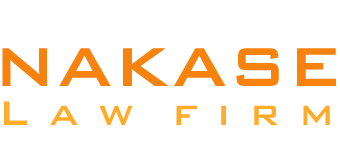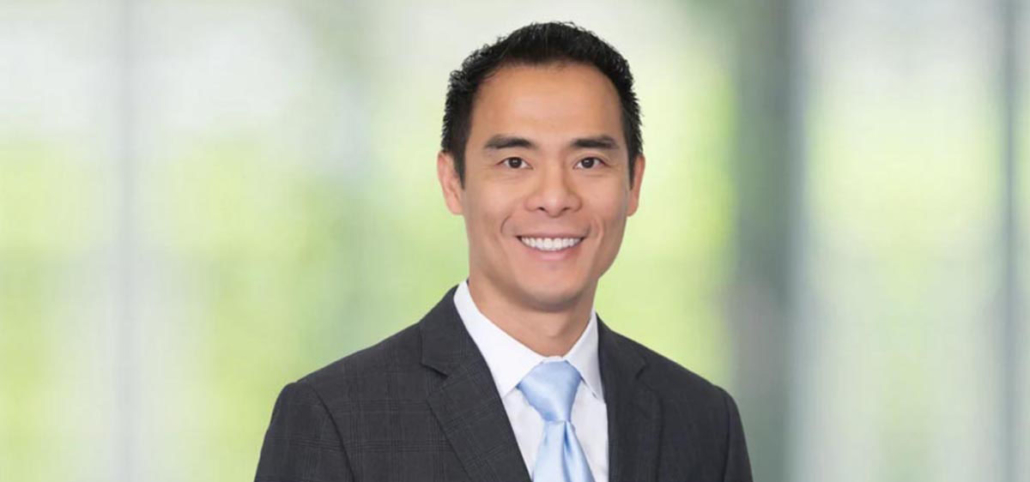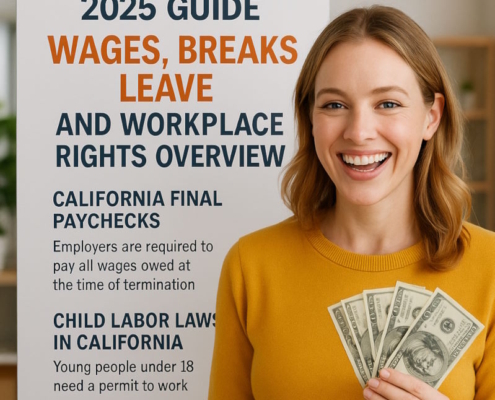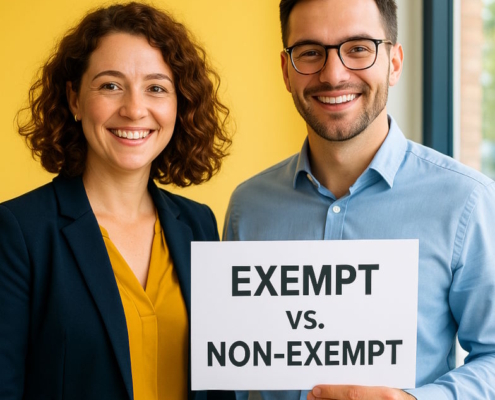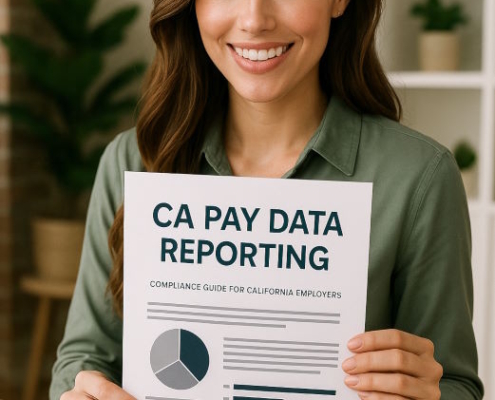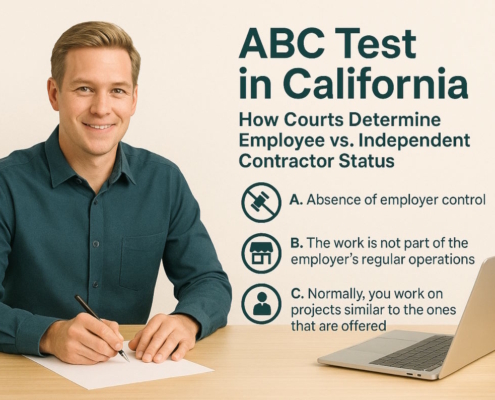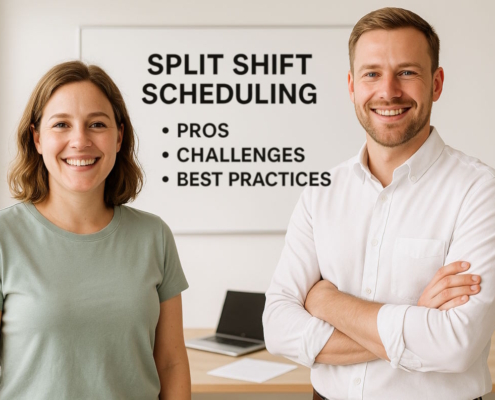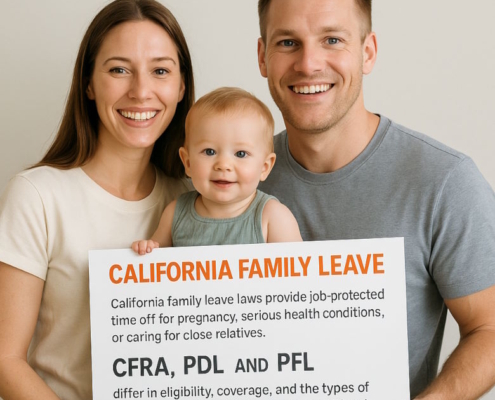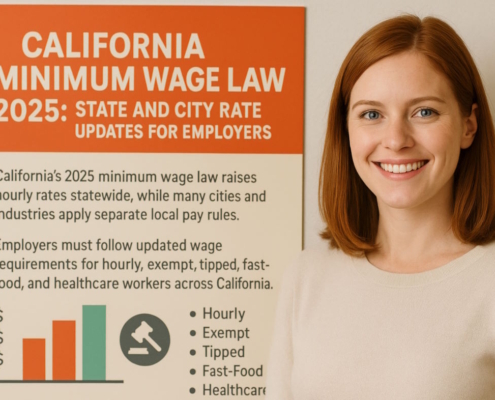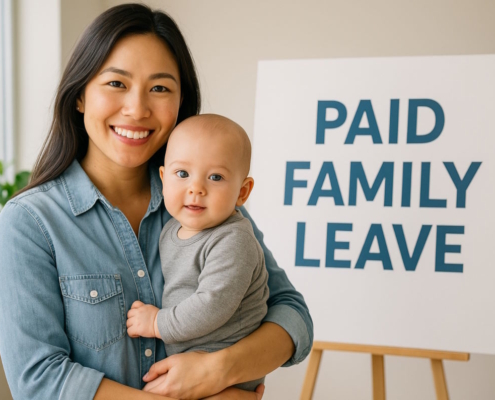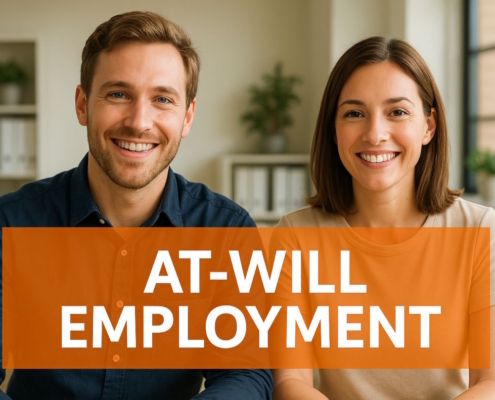What is the program for temporary disability from work in California?
The Employment Development Department (EDD) of California administers the short-term public insurance program known as State Disability Insurance (SDI). You can expect to receive sixty to seventy percent of your former salary from SDI if you:
- Experience a health problem that is unrelated to your job. You might keep getting these SDI payments for a whole year.
- Want to use your Paid Family Leave (PFL) to spend time with a new baby or sick relative. Up to eight weeks of PFL payments are available.
- Are pregnant.
Note: If you’re sick from COVID-19 or if you’re caring for someone who is sick from COVID-19, you might be eligible for Supplemental Security Income (SSI) or a Pension (PFL).
You need to have had California’s Social Security taxes withheld from your paycheck for a specific amount of time in order to collect SDI. Typically, this amount is 1.1% of your salary. If you have done this, SDI will help make up for some of the money you would have lost if you were not able to work due to the reasons listed above.
With SDI, you can get coverage in three basic ways:
- The State Plan provides automatic coverage to most (but not all) employees in California.
- While the SDI State Plan is mandatory, some employers choose to provide their employees private Voluntary Plans, which are required to meet minimum coverage standards and include at least one element that the State Plan does not.
- As an entrepreneur or self-employed person, you have the option to pay for Elective Coverage, which offers benefits for thirty-nine weeks rather than a complete year.
Looking at SDI next to other programs
For those who are unable to work due to an injury or sickness that is not employment-related, State Disability Insurance (SDI) offers temporary payments. Many people mistake SDI for other programs:
- If you suffer an injury or illness on the job and are unable to work, you may be eligible for payments via Workers’ Compensation.
- Those who have paid into the system (via payroll taxes while working for a minimum amount of time) who are unable to work due to a disability are eligible for long-term payments through Social Security Disability Insurance (SSDI).
- People who are blind, have a disability, or are 65 or older and living on a low income can get long-term benefits through Supplemental Security Income (SSI).
- Employers pay into Unemployment Insurance (UI), a scheme that provides temporary assistance to those without jobs. It is not possible to have both SDI and UI simultaneously.
- You may be eligible for benefits such as private short-term and long-term disability insurance through your workplace or through private insurance providers.
Funding SDI
The vast majority of California workers have their payments for State Disability Insurance (SDI) withheld automatically from their paychecks. This implies that the SDI program receives 1.1% of your wages on a monthly basis. Such taxes are formally known as SDI contributions.
Example
Prior to taxes, your paycheck amounts to $1,000. The Social Security Administration (SSDI) receives 1.1% of each salary automatically. Here, that translates to eleven dollars. You will owe $286 per year to SDI if you receive this paycheck biweekly for a year.
SDI helps a lot of people in California. The state uses the money that they put into a fund to pay out SDI compensation.
Who Does Not Qualify for SDI?
Except for a small number of workers, most California employees have SDI coverage.
Individuals not included in the coverage are:
- The vast majority of municipal, county, state, and federal personnel. N.D.I. reimburses some government employees in the event of a covered disability.
- In some cases, domestic help
- Workers on the Interstate Railroad
- Certain individuals working for nonprofits
- Employees or owners of their own businesses who are not required to pay for health insurance premiums
- Different SDI Programs
An SDI plan might take one of three forms:
- The majority of California workers have access to Paid Family Leave through the State Plan.
- Various companies provide employees with the option to enroll in voluntary employment programs. The Social Security Administration has authorized the following private disability insurance policies. These alternatives to the state plan must provide health coverage that meets or exceeds the state plan’s standards while also including at least one element that the state plan does not. The private plan requires the approval of the majority of employees and cannot be more expensive than the State Plan.
- You can get Elective Coverage through SDI if you are self-employed or operate a business. There are some exceptions to the norm. Some examples are a 39-week Elective Coverage period and premiums that are proportional to some of your profit from the prior year.
Requirements for Receiving the SDI Benefit
If you have paid payroll taxes into SDI and are unable to work due to one of the following, you will get a cash benefit:
- You can’t do your job because of a disability. SDI uses a less strict definition of disability than the federal Social Security Disability Insurance program (SSDI), which is any mental or physical sickness or injury that keeps you from performing your normal and usual work.
- Paid family leave (PFL) is mandatory and helps cover lost wages when you take time off to care for a sick family member or to adjust to a new baby.
- Expecting a child soon. While being pregnant does not technically qualify as a “sickness or injury,” it does provide a legitimate medical justification for a leave of absence from work. Note that this article does not address pregnancy disability leave. Feel free to reach out to the EDD with any inquiries you may have.
Additionally, you need to fulfill the following criteria:
- Benefits will not begin to accrue unless you can prove that you are disabled or will be absent from work for longer than seven days. Take note: PFL does not impose any waiting period.
- You must be actively seeking employment if you are now jobless.
- For the first eight days of your disability and for the duration of your Social Security disability insurance benefits, you must be under the supervision of a medical provider.
- During your base period, you must have earned a minimum of $300 in wages.
- The official beginning date of your disability and the beginning date of your claim are the same thing: the day you become unable to work owing to your condition. You must include this date when you submit your claim. If you satisfy all of these conditions, you will be notified by this date. You will not be able to adjust your start date after you file your claim.
SDI/PFL and Coronavirus
It is possible to be eligible for SSDI benefits if you become ill as a result of COVID-19. You can also be eligible for PFL if you are providing care to someone who is ill with COVID-19.
How to Apply
The Employment Development Department (EDD) in California oversees the Supplemental Security Income (SSI) program.
Illnesses or injuries that are not caused by work
Applicants can petition for SSDI benefits in the event that they are unable to work due to a non-job-related disability or illness by:
- On the web at SDI Online. To help you file an SDI claim online, EDD has both written instructions and a video.
- Through regular mail. One can obtain a paper form at an SDI office, their employer, a doctor’s or medical practitioner’s office, or one can order a form online via EDD’s Online Forms and Publications and have it sent to them. EDD shows you how to mail in an SDI claim.
You have to apply within 49 days of the start of your injury or you might not get benefits. The earliest you can apply is 9 days after you became disabled and could not work. Post-49 application delays require a cover letter outlining the reasons for the delay.
You are required to complete Part A of the application, and your doctor or other medical professional must complete Part B, which is a medical certification of your disability. Failure to accurately submit either Part A or Part B will delay the processing of your claim.
Whether you prefer to complete it online or by mail, it is your responsibility to have your doctor or other qualified medical professional fill out Part B. To find out how to submit your doctor’s or medical practitioner’s portion of your SDI claim, you should inquire as not all medical offices handle these types of claims in the same manner.
Paid Family Leave
While there are a few variations in the application forms, the process for Paid Family Leave remains the same:
- Available at SDI Online. EDD offers both written instructions and a video tutorial on how to apply for PFL online.
- Through regular mail. EDD offers a video tutorial and written instructions for submitting a mail-in PFL application.
The PFL application consists of multiple elements. Complete Part A. Have the individual you are caring for sign Page 2 and fill out Part C. If they need help with this, contact 1-877-238-4373 for instructions and the necessary documents. Lastly, have their doctor or medical practitioner fill out and sign Part D.
In most cases, you should expect to begin receiving your SDI or PFL payments within two weeks following the submission of your claim, provided that there are no issues with your paperwork. It will take longer for you to collect benefits if you file multiple copies of the same claim.
Refusal of SDI or PFL benefits
If SDI determines that you do not meet the requirements to receive PFL or SDI benefits, they will notify you of this decision and provide you with ways to appeal. You can submit an online or written appeal to SDI’s decision within 30 days of the notice’s date. Depending on their decision, EDD may opt to pay your benefits or refer your case to the California Unemployment Insurance Appeal Board’s local office for a hearing.
You can find the necessary steps to appeal and be ready for a hearing on EDD’s website.
Sum of Benefits
Typically, for the first 52 weeks of a disability, SDI will pay between 60% and 70% of your usual earnings. But since your revenue could fluctuate from one month to the next, from one season to the next, or even from one year to the next, it’s difficult to pinpoint a precise typical weekly income.
The amount of money you made in the twelve months before to your application is what SDI uses to determine your benefit amount:
Approximately seventeen months prior to the onset of your disability and
Roughly five months prior to the start of your disability
Your base period is these twelve months. You need to have worked and paid Social Security taxes on $300 or more in your base period to be eligible for SDI benefits.
SDI then splits the 12-month baseline into four equal parts. They calculate your benefit amount based on the quarter in which you made the greatest money.
Example
Since you’ll be starting your disability benefits in January of 2024, the dates of October 1, 2022, through September 30, 2023, determine your base period. In order to calculate SDI, divide your base period into four quarters and examine your wages for each quarter:
Your paycheck for the months of October, November, and December in 2022 was $1,000. You earned $13,000 in the first three months of 2023. There was a three-month pay gap in 2023. You earned $11,000 in the summer months of 2023. SDI will consider your highest income of $13,000 from January, February, and March 2023 to determine your benefit payment amount.
SDI determines your average weekly wage for the quarter in which you made the most money. Typically, your weekly SSDI payments will range from $50 (the least) to $1,620 (the maximum), which is 60-70% of your normal weekly salary.
Take note that the precise benefit computation fluctuates between 60% and 70%. The majority of people receive a lesser amount, while those with really low incomes typically receive a higher one.
Example
According to SDI’s calculations, your maximum quarterly salary in the given scenario was $13,000. During that quarter, you earned $1,000 every week ($13,000 ÷ 13), because one quarter is equal to thirteen weeks. About $600 per week ($1,000 ×.60) is your weekly SDI benefit amount, which is approximately 60% of your weekly income.
Some exceptions to the base period
It is possible that your base period salaries were low due to circumstances beyond your control. Luckily, SDI takes this into account. If your earnings were not high enough to qualify for SDI, you can increase your benefit or simply increase your eligibility by using wages from a quarter before the usual base period.
You may be eligible to deduct last quarter’s earnings if you were:
- Serving in the armed forces
- Getting workers’ compensation benefits
- Labor disagreement keeps you from working.
- More than 60 days without a job in a quarter (only if you weren’t eligible for SDI at the time)
Coverage Duration
If all goes according to plan, you should expect to receive your first benefit payment no later than two weeks after submitting your claim, with further installments spaced every two weeks thereafter. Most people get paid with a debit card, which you can use to buy things or set to deposit your money into your bank account regularly. Checks can be sent to you via regular mail if that is more convenient for you.
As a general rule, your benefit term will conclude on the date that your treating physician or other medical professional indicated on your claim form as the anticipated return to work date. You will receive notice from SDI that your benefit is terminating on that date. Together with your doctor, you can request an extension of your disability benefits if you are still unable to work.
It is possible to submit a “continuous claim certification” through your SDI Online account or by regular mail at regular intervals if you are receiving benefit payments from EDD. Notify EDD without delay if you have regained your ability to work, whether it’s part-time or full-time, or if you receive any other form of income. The death of an individual receiving SSDI benefits must also be reported promptly. Notifying EDD could prevent them from paying you more than what is due. This is known as an overpayment, and you will be required to repay it.
SDI is designed to cover income loss for a maximum of 52 weeks. So, you can keep getting benefits until you’ve spent 52 times your weekly benefit amount. Extended benefit periods beyond 52 weeks are possible for those who work part-time or who have their benefits cut for other reasons.
Take note that you are limited to 8 weeks of Paid Family Leave annually and that the maximum benefit term for Elective Coverage is 39 weeks.
Working Part-Time
You may be able to keep receiving SDI payments if you go back to work part-time. You will keep receiving your full Social Security disability benefit amount if the sum of your benefits and your part-time earnings is less than what you were making every week shortly before your disability started.
Example
Prior to your disability, you were earning $1,000 per week; now, you receive $700 per week from SSDI. You get a part-time job again and make $200 per week. You receive $900 per week after deducting your SDI benefit from your part-time earnings. You will continue to receive the entire amount of your SDI benefit even though this is less than the $1,000 you were earning before you got your disability.
Reduced SSDI payments occur when a person’s part-time earnings plus SDI benefits exceed their earnings before the start of their disability.
Example
You were making $1,000 per week before you became disabled, but your Social Security disability payment is only $700 per week. After taking a week off, you return to work and get $600. Your weekly earnings would exceed your SDI benefit if it remained at $700, coming to $1,300. To ensure that your weekly earnings remains at $1,000 or below, SDI reduces your benefit amount to $400. This means that you will have that $400 plus the $600 you earn, bringing your total income back to what it was before you became disabled.
Other Cuts to Benefits
There are a lot of factors outside part-time job that could reduce your benefit. SDI treats several forms of income as if they were wages. Any or all of the following can lessen the amount of money you get from SDI, depending on your circumstances:
- Commissions
- Bonuses
- Holiday compensation
- Pay for sick days
- Payouts for workers’ compensation
- Income for Military Personnel
- Other income
SDI does not include earnings from paid time off. Please be aware that SDI requires the reporting of all income, regardless of whether it impacts your benefit payments or not.
Even if it takes more than 52 weeks, you can continue to get partial benefits until they are paid in full.
Example
The standard disability income (SDI) compensation is $100 per week, for a total of 52 weeks, or $5,200. You have received $2,600, or half of that amount, after six months. Assuming you return to part-time employment and your benefit drops to $50 per week, you will continue to receive that amount until you have accrued $2,600 in benefits, which will take around another year.
Paid Family Leave (PFL)
The SDI program includes PFL. PFL is not something you pay for individually; if your employer has deducted SDI taxes from your pay, you can use PFL to help care for a critically ill relative (parent, child, parent-in-law, grandchild, grandparent, spouse, sibling, or registered domestic partner) or to form a bond with a new child.
The formula for determining the amount of your weekly PFL benefit is the same as that for SDI; you use a base period and average your weekly pay from the quarter in which you made the most money to figure out the amount. Additional income from things like commissions, bonuses, sick pay, holiday pay, or other sources may reduce your benefit amount, just as it does with SDI.
Having said that, PFL does have a few quirks:
- PFL has its own unique claim form. Videos describing the online and mail-in PFL application processes are available on EDD’s website.
- It is necessary to obtain a doctor’s certification of illness in order to administer PFL to a sick relative.
- There is a yearly cap of 8 weeks for PFL.
- There is no guarantee that PFL will keep your employment, however some companies are required by law to comply with federal and state leave regulations.
- With PFL, you won’t have to wait the standard 7 days.
Pregnancy
SDI considers pregnancy to be a medical condition that can limit an individual’s ability to work. The benefit period typically lasts from four weeks before your due date until six weeks following delivery for pregnancies that do not have any difficulties. If you are unable to work after that period due to pregnancy or recovery, your doctor must include this on the claim form. After that, it will be treated similarly to any other medical condition that prevents you from working. When it comes to SDI and pregnancy, EDD addresses common concerns.
Do not submit a fresh PFL claim for maternity leave after you have given birth; your leave will be automatically granted. After your SDI benefit expires, you will receive a form to complete. Just like when you were pregnant, you will get a benefit check. So, if you’re an SDI beneficiary and your pregnancy goes smoothly, you’ll get SDI for four weeks leading up to and six weeks after the baby is born, and you have extra time to bond with your new little one for an extra six weeks if you want to. To help with the transition from SDI to PFL, EDD has put up a video on the subject.
Please note that this piece is mostly about SDI for disabled people and PFL for people who care for a disabled person. Reach out to the EDD with any inquiries regarding Pregnancy Disability Leave.
Other things connected to SDI
- Employers are still able to fire you even if you’re receiving SSDI benefits. To find out what your rights are in this situation, SDI recommends getting in touch with the Civil Rights or Industrial Relations departments.
- Employers can still terminate your health insurance coverage even if you’re receiving SDI benefits. Covered California and COBRA are two options for obtaining health insurance in California that could be more affordable for you.
- For any program-related questions, the SDI website is a great resource. Their extensive Frequently Asked Questions (FAQs) cover every imaginable subject.
- Do not hesitate to register a claim even if you are unsure. People are encouraged to apply for the SDI scheme.
- Get in touch with the California Employment Development Department (EDD) if you’re interested in applying for SDI or have any inquiries regarding your claim.
Social Security Disability Programs
In most cases, the duration of State Disability Insurance (SDI) benefits is one year or shorter. You should apply for Social Security Disability Insurance (SSDI), a government disability insurance program that you pay into with your payroll taxes, if you and your doctor or medical provider believe that your disability will last more than a year. You are eligible for this benefit if you have contributed to the system for a sufficient amount of time. In order for SSDI to take over from SDI, your impairment must have lasted for more than a year. Taking both SSDI and SDI at once will lower your SSDI.
If you will be out of commission for more than a year due to disability, or if your job history does not qualify you for SSDI, you may want to look into applying for SSI instead. People with disabilities, blindness, or a 65-year-old or older income level can receive a benefit from this government income program. You will see a reduction in your SSI payout if you get both SDI and SSI simultaneously.
Claims processing for both of these programs can take over a year, so it’s best to apply early.
Workers’ Compensation
SDI covers disabilities that are not directly related to job. The Workers’ Compensation (WC) insurance program pays for medical expenses and lost wages in the event of an accident that occurs on the job. It is not possible to get both WC and SDI together. However, while you wait for your WC claim to be accepted, you can get SDI. The Division of Workers’ Compensation in the Department of Industrial Relations has a guidebook for injured workers and an article called “What to Do If You’re Injured at Work” that can help you learn more.
Unemployment Insurance
The jobless can also enroll in a different insurance program. In most cases, if you are disabled and unemployed, you should apply for Social Security Disability Insurance (SDI) payments first, and then for unemployment insurance insurance.
- SDI has the potential to provide more value over a longer time frame than UI.
- To qualify for unemployment insurance, you must be able to actively seek out and accept employment opportunities.
- It is not possible to have both UI and SDI simultaneously.
An example: Matt’s story
Matt quits his job as a construction worker early one December day due to a severe sideache. He contacts his physician, who advises him to visit the emergency room since he may be suffering from appendicitis. Matt had to spend a few days in the hospital after undergoing surgery to remove his appendix.
Matt and his surgeon, Dr. Shelby, discuss the expected recovery time when he is ready to go home from the hospital. When she inquires about his occupation, Matt clarifies that he is a construction worker who is responsible for physical labor such as heavy lifting. Matt will likely be out of commission for around two months as he recovers, according to the doctor.
Listening to Dr. Shelby, Matt warns, “Taking that much time off work would be an issue. I’ve used up all of my sick leave and I don’t know what I’m going to do if I don’t have any money coming in for that long.”
“There’s no need to be concerned,” the doctor puts it gently. You might benefit from a program, in my opinion. I will arrange for a social worker to visit with you prior to your discharge from the hospital.”
Matt fills social worker Tom in on the details when he drops by a short time later. If Matt has State Disability Insurance, Tom wants to know about it. Tom notices that Matt is perplexed and decides to ask him if he has ever seen the term “SDI” on his pay stub.
“I’ve always been curious about the meaning of that,” Matt remarks. Could you explain that for me?”
State Disability Insurance, or SDI for short, is a program in California that helps people replace lost income when they are unable to work due to a disability, as Tom explains.
“You mean I receive SDI if I fall off my ladder at work?” Matt inquires.
Tom clarifies that SDI is for non-work-related injuries and illnesses.
“As in, say, appendicitis?” Matt says, smiling.
“Indeed,” responds Tom. “If you were hurt while working, you can file a claim with the Workers’ Compensation program.”
“Alright,” Matt replies with a nod. “How can I apply for this SDI, and what is the payout amount?””
“You can apply for it online at SDI Online. After that, you’ll need to have Dr. Shelby provide medical information regarding your injuries, including the estimated length of time you might be out of work. SDI is only available if you can’t work for more than seven days,” Tom explains. “You could fill it out by hand and send it in, but filling it out online would be faster.”
During Matt’s follow-up meeting with Dr. Shelby, Tom proposes that he bring up the SDI claim, and he explains how to begin the application process online.
“Your earnings will determine the amount of money you receive from SDI,” Tom explains. “The amount you receive will often range between 60% to 70% of your pay. It’s a sliding scale; those with extremely low incomes receive the higher percentage, but the average person, like you, will likely receive the lower number.”
“However, there are some periods of the year when my income is higher,” Matt cuts in. “How do they calculate my salary?””
According to Tom, SDI takes a 12-month baseline, beginning around 17 months before a disability begins and ending about 5 months before the condition begins. To help Matt understand the rules, he gives him a simple breakdown: the base period begins on July 1 of the preceding year and concludes 12 months later for disabilities that begin in December.
“But we’re getting ahead of ourselves here. They’ll break those 12 months into sections, and then take the quarter with the highest pay to calculate your benefit,” Tom explains. “The window for filing a claim is nine days from the day of disability onset; nevertheless, you should act quickly, as you must register your claim within forty-nine days of the disability onset or it will be too late. You must first create an SDI Online account, complete the application, and keep track of your Form Receipt Number. During your follow-up appointment, please provide Dr. Shelby with that number so that she can submit your medical records along with your claim.”
“Are there any other programs that could assist me during my time off from work?” Matt inquires.
“Well,” Tom explains, “if anything goes wrong that causes you or Dr. Shelby to believe that you won’t be able to work for more than a year, you can apply for the federal Social Security Disability Insurance benefit. If it seems like that’s going to happen, you should apply to SSDI as soon as possible. You might also want to check with your company’s HR to see if you have any Short-Term Disability insurance. But for now, let’s get you on SDI.”
After Matt goes home and thanks Tom for his help, he registers online and files his SDI claim when the 9-day waiting period is up. A few days later, at his follow-up appointment, he gives Dr. Shelby his Form Receipt Number, and she estimates that Matt will be out of commission for two months, so she files the necessary details with SDI.
Two weeks down the road, Matt begins receiving a weekly benefit of $600. He recalls that Tom had informed him that SDI would pay 60–70% of his income, with the lower percentage applied unless his income is extremely low. Since Matt had been making $1,000 per week for half of the previous year, the weekly benefit of $600 makes sense to him.
Dr. Shelby predicted that Matt would need two months to recover on the SDI claim form. After that time, Matt can go back to work full-time, and his SDI benefits will stop.
Questions that come up often
1. What does State Disability Insurance (SDI) do?
For up to a year, the California Employment Development Department’s Supplemental Security Income (SSDI) program will give you a weekly benefit equal to 60-70% of your normal earnings in the event that you are unable to work due to:
- Experiencing a health problem that is unrelated to your job
- Being pregnant
- Wanting to use your Paid Family Leave (PFL) to spend time with a new baby or sick relative
Take note that the benefits of PFL are only valid for a maximum of eight weeks.
Most workers have SDI taxes deducted from their paychecks, but self-employed people and business owners have the option to pay for Elective Coverage, which offers shorter benefits (39 weeks instead of a year).
2. Who can I talk to about the SDI program?
The Employment Development Department (EDD) of California offers several ways to reach them regarding State Disability Insurance (SDI) or Paid Family Leave (PFL), including phone numbers, online chat, and office locations, in case you have any questions regarding these programs.
Helpful hint: if you need to contact EDD by phone but don’t understand English, try calling one of the non-English numbers instead. The receptionists on those lines are very knowledgeable about PFL and SDI and can also speak English. Plus, you might get through more quickly.
3. How is SDI Covered?
A small SDI tax of 1.1% of earnings is withheld from employees’ paychecks and sent to a fund to cover SDI benefits (including Paid Family Leave). Those who are self-employed or own their own businesses have the option to purchase elective coverage by paying premiums according to their profits from the preceding year.
Most people who work in California are covered by SDI. Excluded from coverage are some groups of workers, such as:
- Workers on the Interstate Railroad
- In some instances, domestic help
- A large portion of government workers
- Certain individuals working for nonprofits
- Anyone who owns a business or works for themselves but does not pay for elective coverage
State Disability Insurance (SDI) includes Paid Family Leave (PFL), which reimburses a portion of lost wages when an employee takes up to eight weeks off work to care for a sick family member or to bond with a new child. The calculation of your benefit amount for PFL is different from that for SDI, but the application process is the same.
4. How do you figure out the SDI benefit?
A person’s average income is determined by dividing their base period into four quarters and using the quarter in which they had the highest wages to determine their average income and benefit amount. The SDI program typically pays sixty to seventy percent of the average wages they earned before the start of their disability. The base period begins approximately seventeen months before the start of disability and ends around five months before the start of disability.
5. Who decides what a base period is?
The twelve-month period beginning approximately seventeen months before your disability begins and ending approximately five months before you begin to receive PFL or SDI compensation is known as your base period.
The base periods for 2024 are:
For claims filed in 2024 beginning in Jan, Feb, and Mar:
October 1, 2022–September 30, 2023 is the 12-month base period.
For claims that start in Apr, May, and Jun 2024:
January 1, 2023–December 31, 2023 is the 12-month base period.
For claims that start in Jul, Aug, and Sept 2024:
April 1, 2023–March 31, 2024 is the 12-month base period.
For claims that start in Oct, Nov, and Dec 2024:
July 1, 2023–June 30, 2024 is the 12-month base period.
6. What is the duration of the SDI benefit?
The short answer is that your benefit period typically stops on the day your medical provider indicates on your claim form as when you can return to work. On the other hand, if you are still unable to work after that date due to your disability, you and your provider can request an extension of the benefit period.
If your doctor says you still can’t work because of your disability, you can get up to fifty-two weeks of SDI benefits. This includes 39 weeks of elective coverage and 8 weeks of paid family leave.
If you find a part-time job or other source of income before your benefits stop, you can extend your benefit period beyond 52 weeks and receive the full amount you are eligible for. However, this might result in a decrease in your weekly payment.
As an illustration, consider Jack, who receives a weekly benefit of $200 from SDI and is eligible for a maximum of $10,400 in total payments ($200 x 52= $10,400). After six months, he has received $5,200 in benefits, or half of his total. Jack returns to work part-time, resulting in his weekly benefits dropping to $200. However, his doctor states that he is still unable to work full-time due to his disability, so he continues to receive his $200 weekly SDI payment for another year, until he hits the $10,400 limit.
7. How can one determine if they are medically eligible for SDI?
Employees who cannot work due to a condition that is not work-related are eligible to receive cash compensation from SDI. A disability is defined by SDI as an injury or illness, whether mental or physical, that keeps you from doing your regular and customary work. This definition also includes elective surgery, childbirth, pregnancy, and other similar medical conditions.
You can qualify for Paid Family Leave if you’re taking care of a sick relative. Your loved one must have a serious physical or mental illness that necessitates either at-home care or inpatient treatment in a hospital, hospice, or residential medical institution. Their treatment must also be ongoing.
8. Does my ability to receive SDI depend on the amount of money in my bank account or the value of my possessions, like a house or car?
No, there are no restrictions on the amount of money or property you can own with SDI.
9. What is the process for applying for SDI?
Applicants can petition for SSDI benefits in the event that they are unable to work due to a non-job-related disability or illness by:
- You may find both written instructions and a video guide on how to submit an SDI claim online at SDI Online. The video is also accessible in Spanish.
- When filing an SDI claim through the mail, you have a few options. One is to pick up a paper form at an SDI office. Another is to ask your employer or doctor for one. Lastly, you can order a form online at EDD’s Online Forms and Publications. EDD will then mail you the form.
- Applying for Paid Family Leave to care for a disabled relative requires a separate set of forms, but the process is otherwise identical.
10. How long till I can start receiving my SDI benefits once I apply?
Typically, it takes 14 days for SDI to process an application, so you can expect to start receiving your benefit payments two weeks after you file your claim. There is a waiting period of seven days. This means that you will not get any SDI benefits for the first week you’re off work due to a non-work-related injury or illness. Benefits start on the eighth day.
Take note: PFL does not impose any waiting period.
11. What makes Social Security disability programs different from State Disability Insurance (SDI)?
The State Disability Insurance (SDI) program in California pays out short-term benefits (up to a year) to people who are unable to work due to non-work-related injuries or illnesses. Workers contribute to the program through payroll taxes; self-employed individuals or business owners have the option to pay for additional coverage. SDI covers a variety of disabilities that last longer than seven days. Additionally, it provides Paid Family Leave (up to eight weeks) for people who need to care for a sick relative or bond with a new child.
If you have paid into the Social Security system (by income taxes while working for a certain period of time) and are unable to work due to a disability, you may be eligible for long-term cash benefits under the government program known as Social Security Disability Insurance (SSDI).
People with disabilities, blindness, or age 65 and up who are low-income are eligible for long-term cash payments under the federal Supplemental Security Income (SSI) program.
In order to be eligible for Social Security Disability Insurance (SSDI) or Supplemental Security Income (SSI), a person’s disability must be a total disability that lasts for at least twelve months consecutively or may cause death. The individual must also be unable to perform any of their previous jobs, as well as any other jobs that exist in the national economy, taking into account their age, education level, and work experience.
12. Is it possible to receive SSDI or SSI and SDI benefits at the same time?
The answer is yes, you can be eligible for both federal programs—Supplemental Security Income (SSI) and Social Security Disability Insurance (SSDI)—and California’s State Disability Insurance (SDI). However, receiving SDI benefits could reduce or eliminate your SSI or SSDI payments.
13. How often do I need to reapply to remain enrolled in the SDI program?
You won’t need to reapply, but please notify SDI right away if you:
- Get a job, either full-time or part-time
- Return to full health
- Find some alternative way to make money
Also, if someone receiving SDI payments passes away, you need to report it right away.
On occasion, SDI will ask you to “certify” (complete an online or mail-in form) that you are still eligible for benefits; failing to do so will result in the termination of your benefits. If you are receiving automatic payments, you will be asked to certify after 10 weeks of receiving benefits; otherwise, you will be required to fill out a certification form every two weeks.
With SDI, the benefit payments continue until the day that your medical provider put on your application as your return-to-work date. If your disability continues beyond that date, you and your provider will need to request an extension of your benefit period. Benefits can replace up to fifty-two weeks of lost wages, but if you receive partial benefits, you might receive payments for longer.
14. What are the requirements for immigrants to be eligible for SDI?
You are not required to provide evidence of citizenship or immigrant status in order to apply for SDI.
Is it possible to collect Supplemental Security Income (SSI) if I am still working but have to reduce my hours due to a disability?
If you are working fewer hours than usual, you are still eligible to get some or all of your benefits.
15. Am I eligible to collect unemployment and SDI payments at the same time?
No, you cannot receive both Unemployment Insurance and SDI payments at the same time. If you are currently able to work and are searching for a job, you should apply for Unemployment Insurance. If you are disabled and unable to work, you should apply for SDI.
16. While receiving SDI benefits, can I work? If so, what will happen?
If you are able to return to work full-time, your SSDI benefits will end. If you go back to work part-time, your part-time wages and the amount of your SSDI payments will be added together. If this amount is less than what you made before your disability started, your full SSDI benefit will continue. On the other hand, if your SDI benefit plus your part-time wages is greater than what you made before your disability started, your SSDI payment may decrease.
Take Adam as an example: he was making $1,000 per week before his injury, and now he’s only getting $600 per week from SDI. After a few months of being off work, he’s able to return to work part-time and earn $500 per week. His total income is $1,100, which is greater than the $1,000 he earned before his injury. So, Adam’s SDI payment is reduced to $500, but he still receives this partial SDI payment.
People who get a partial SDI benefit may get payouts for longer than 52 weeks (thirty-nine weeks for elective coverage).
17. How long do I have to make my claim?
Once you become disabled, you have to file your claim between nine and forty-nine days later. If you wait too long, you could lose your benefits, so if you submit your claim after forty-nine days, write a letter explaining why you weren’t able to do so on time.
18. Is pregnancy covered by SDI?
Yes. If your pregnancy prohibits you from working before or beyond that period, your doctor must explain this on the claim form. Generally speaking, the benefit period for a pregnancy without difficulties lasts from four weeks before your due date to six weeks following your delivery.
